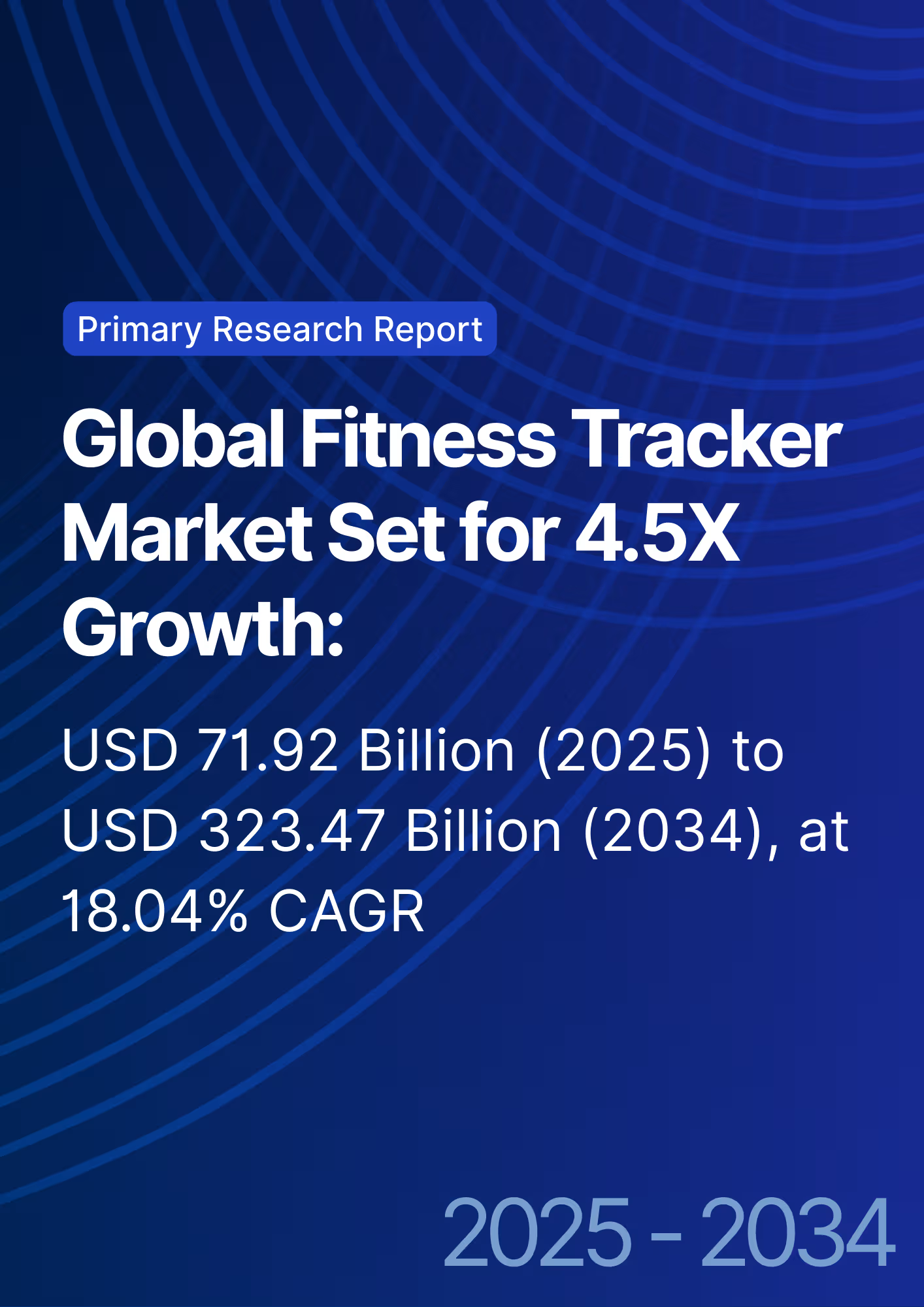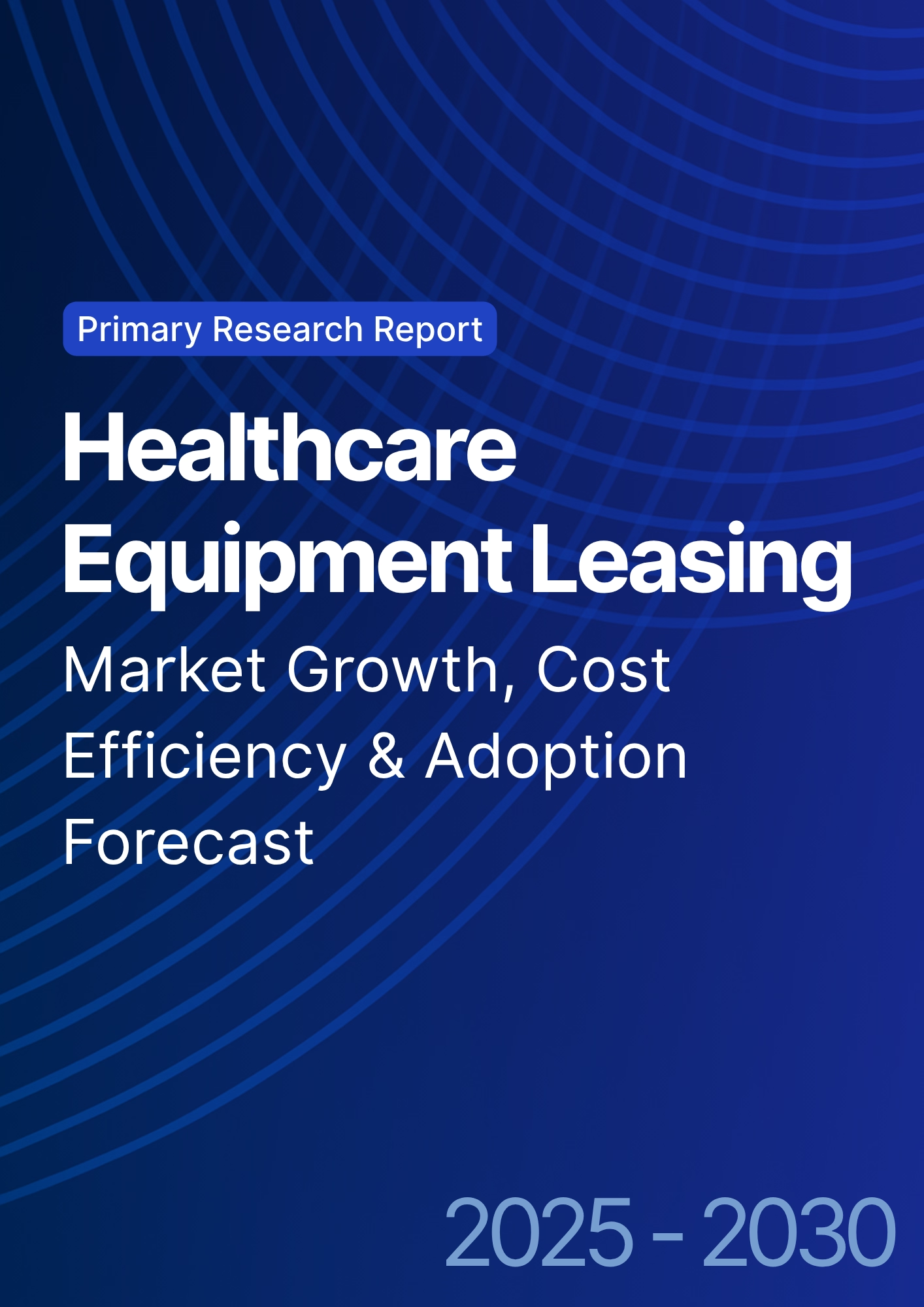

68 Circular Road, #02-01 049422, Singapore
Revenue Tower, Scbd, Jakarta 12190, Indonesia
4th Floor, Pinnacle Business Park, Andheri East, Mumbai, 400093
Cinnabar Hills, Embassy Golf Links Business Park, Bengaluru, Karnataka 560071
Connect With Us
VR Surgical Training: Haptic Feedback Integration & Credentialing Standards - Technological Advancements
Between 2025 and 2030, the VR surgical training market grows from $1.6B to $8.3B (CAGR 38.5%) in the USA and EU, driven by advancements in haptic feedback technology and evolving credentialing standards. Haptic feedback improves the realism of VR training, providing surgeons with real-time tactile sensations to better simulate live procedures. As these technologies gain acceptance, medical institutions and healthcare providers integrate VR training programs into standard medical education. By 2030, 40% of surgical residents will complete their initial training using VR-based simulators.
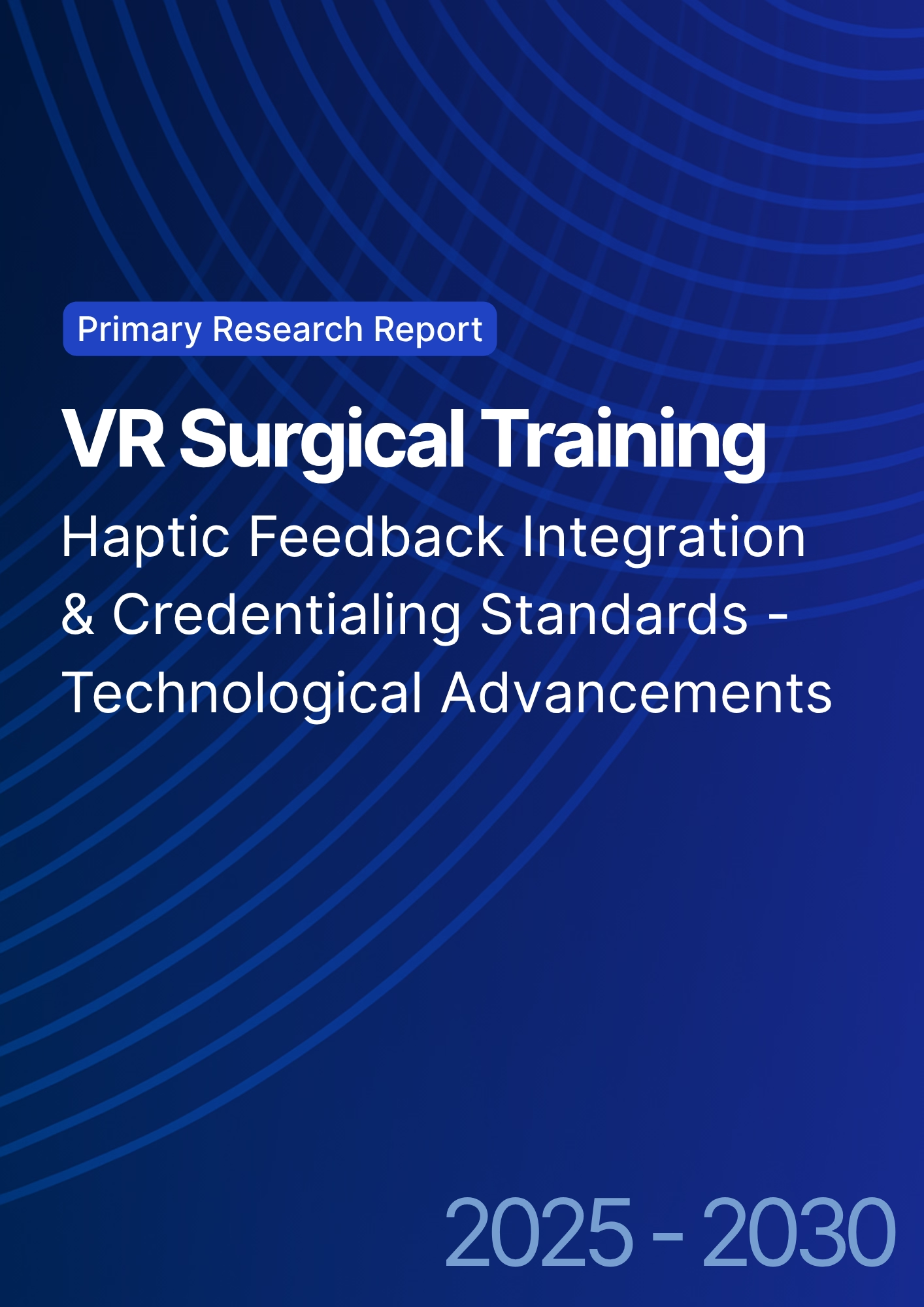
What's Covered?
Report Summary
Key Takeaways
- VR surgical training market: $1.6B → $8.3B (CAGR 38.5%).
- Haptic feedback adoption grows +45% in VR surgical training.
- 40% of surgical residents use VR simulators for initial training by 2030.
- EU and USA to implement unified credentialing standards by 2028.
- VR reduces training time by 30% compared to traditional methods.
- Medical schools report +35% increase in training efficiency with VR.
- Surgical simulation accuracy improves by 38% with haptic integration.
- Private funding for VR surgical training companies doubles to $3.5B.
- Insurance companies begin reimbursing for VR-based surgical training by 2030.
- Remote VR training allows global collaborations, with 12% increase in international training partnerships.
Key Takeaway
Market Size & Share
The VR surgical training market in North America and Europe is set to expand from $1.6B in 2025 to $8.3B by 2030, with an average CAGR of 38.5%. The USA remains the largest market, accounting for 45% of the global market share by 2030, driven by increased adoption of VR technologies in surgical residency programs. Haptic feedback integration significantly enhances training realism, improving surgical simulation accuracy by 38%. Medical schools and hospitals in North America and Europe invest heavily in VR platforms to streamline training for complex procedures. Surgical residents complete 40% of their initial training using VR simulators by 2030. These training systems reduce overall training time by 30%, making them a cost-effective solution for healthcare institutions. By 2030, insurance companies begin reimbursing for VR-based surgical training, increasing adoption rates across hospitals and academic medical centers. The EU market is expected to grow by 45% over the next five years, driven by collaboration between governments and private healthcare systems to integrate VR into medical education. Investment in VR surgical training companies increases by 3×, with private funding reaching $3.5B by 2030. The development of unified credentialing standards for VR-based training will be finalized by 2028, ensuring global standardization and allowing for greater interoperability between medical institutions across regions.
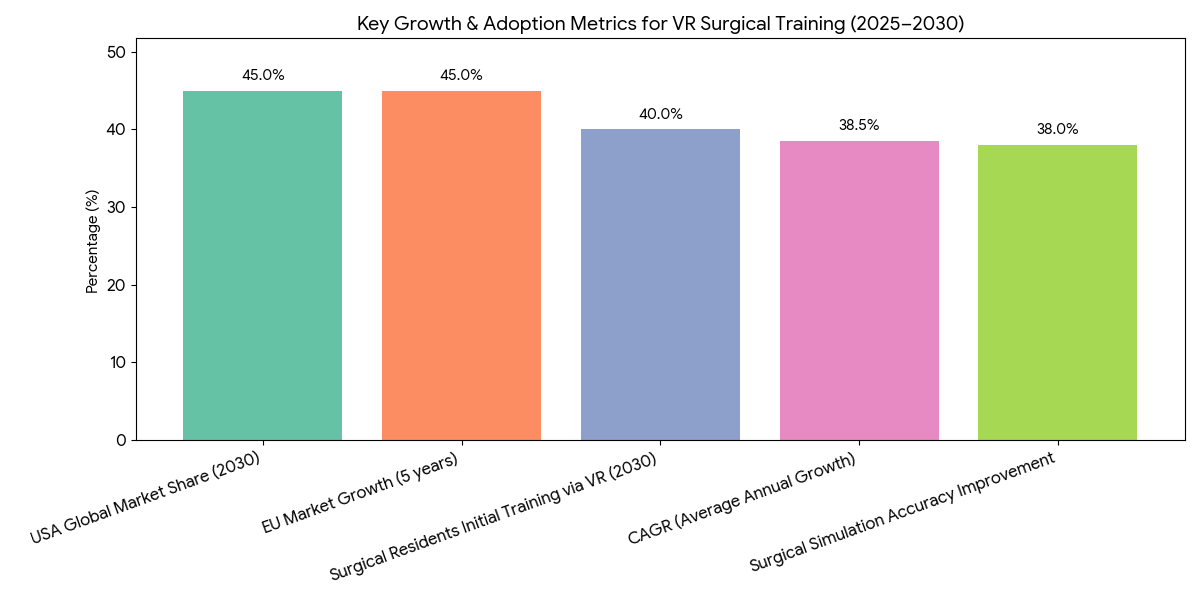
Market Analysis
The market for VR surgical training in North America and Europe is heavily influenced by key drivers such as haptic feedback technology, credentialing standards, and global collaboration. (1) Haptic Feedback Technology: The integration of haptic feedback in VR systems enables real-time tactile simulation, improving surgical training accuracy by 38%. Surgeons can now experience a more realistic representation of tissue texture, resistance, and force application, which enhances their procedural confidence. By 2030, 45% of VR systems will incorporate haptic feedback for more effective training in complex surgical scenarios. (2) Credentialing and Standards: The introduction of unified credentialing standards for VR surgical training, expected by 2028, ensures global acceptance of these programs. Accredited institutions in the USA and Europe will integrate VR simulations into residency programs, increasing training efficiency by 35%. (3) Provider and Payer Collaboration: Collaboration between medical providers and insurers will help reimburse VR training programs by 2030. Value-based care models, incentivizing improved patient outcomes, further boost adoption rates of VR surgical systems. (4) Global Collaboration: The demand for global VR-based collaborations increases, particularly in remote surgical training. AI-based platforms allow medical students in underserved regions to receive access to high-quality surgical education, improving healthcare outcomes globally. By 2030, VR platforms will be used in 10% more international collaborations, expanding access to cutting-edge surgical training.
Trends & Insights
Several key trends are shaping the future of VR surgical training for 2025–2030. (1) Haptic Feedback Integration: As VR technology evolves, the integration of haptic feedback systems significantly enhances the realism and effectiveness of surgical training, improving procedural accuracy by 38%. This integration makes training more immersive and helps trainees better replicate real-world surgeries, especially for complex or delicate procedures. (2) Standardization of Credentialing: By 2028, unified credentialing standards for VR-based surgical training will be established, improving interoperability between medical schools and hospital systems. This allows for global recognition of VR training programs and international certifications for surgical competency. (3) Cost Reduction: VR training reduces the overall cost of surgical education by eliminating the need for physical cadavers and expensive operating room time. By 2030, VR-based systems will reduce training time by 30%, which translates into cost savings for both academic institutions and healthcare providers. (4) Global Collaboration: The widespread adoption of remote VR training platforms facilitates global collaboration. International medical institutions can now share clinical data and virtual training resources, improving global surgical skill levels and helping address healthcare disparities. (5) Clinical Validation: Clinical trial participation in VR surgical training grows by 18% annually, proving its value in improving surgical competency, patient safety, and outcome predictability. By 2030, VR surgical training will be an industry standard for surgeons and medical residents.
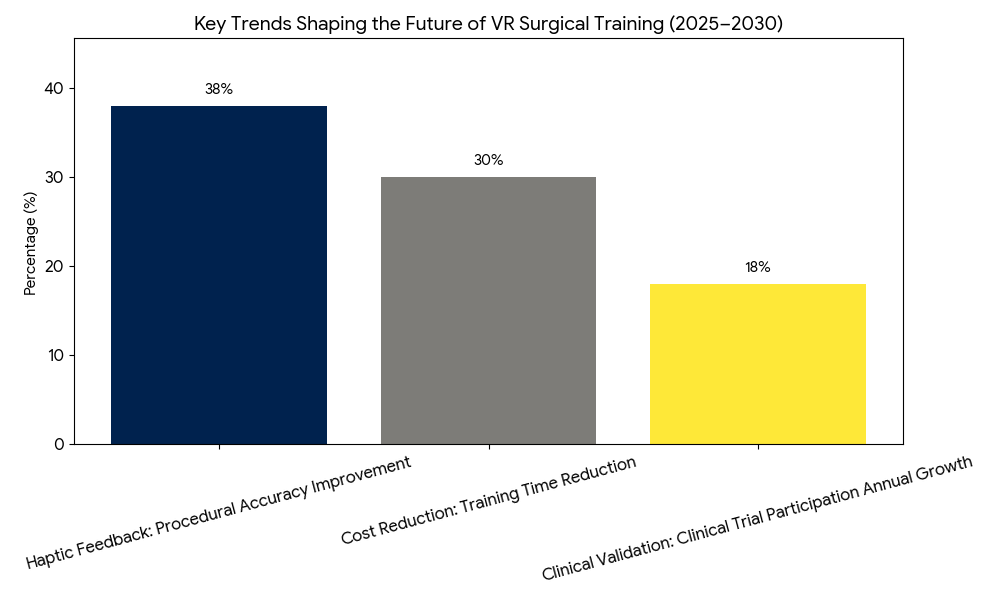
Segment Analysis
The VR surgical training market for USA and EU is segmented into two primary categories: surgical specialties and training technology. Surgical specialties account for 55% of market share, with orthopedic, cardiothoracic, and neurosurgical training driving the highest demand for VR simulators. Orthopedic VR simulators grow at the fastest rate, as bone and joint surgery training can be simulated more effectively using AI-driven feedback. Cardiothoracic surgery simulations, incorporating haptic feedback, expand rapidly due to the complexity of the procedures. Neurosurgery also represents 18% of the segment, with VR simulators improving precision in spinal surgeries and brain tumor resections. Training technology represents the remaining 45% of the market share, which includes the development and implementation of VR simulation platforms and haptic feedback integration tools. The growing presence of technology firms like Osso VR, Surgical Science, and ImmersiveTouch in the USA and EU drives the expansion of VR platforms across medical schools and clinical training centers. By 2030, these platforms will make up 40% of initial training for surgical residents. The market is dominated by public-private partnerships between healthcare providers and tech companies, leading to the development of innovative training solutions for a wide range of specialties. AI integration will enhance real-time feedback for students, ensuring high-quality surgical education.
Geography Analysis
North America dominates the VR surgical training market, capturing 55% of global market share by 2030. The USA leads the way, accounting for 45% of the market share, driven by widespread adoption in medical institutions such as Harvard Medical School, Johns Hopkins, and Stanford. These institutions integrate AI-powered VR platforms into their residency programs, which helps reduce training time by 30% while enhancing surgical accuracy. Canada follows with 10% market share, with public health organizations and universities supporting the integration of VR-based training for surgeons. Europe accounts for 30% of the market, led by Germany, France, and the UK, where medical schools adopt AI-based surgical simulators. Germany shows the highest adoption rate for VR surgical platforms, particularly in cardiothoracic and neurological specialties. Private companies such as Osso VR and Surgical Science have formed partnerships with European hospitals to implement these technologies in training programs. MEA (Middle East & Africa) captures 15% of the global share by 2030, driven by investments in healthcare infrastructure in countries like UAE and Saudi Arabia. By 2030, clinical trial participation for VR surgical training systems will increase 18% annually, validating the effectiveness of haptic feedback systems and AI-powered training modules. Remote training platforms allow international students to gain hands-on experience, expanding global collaboration in surgical education.
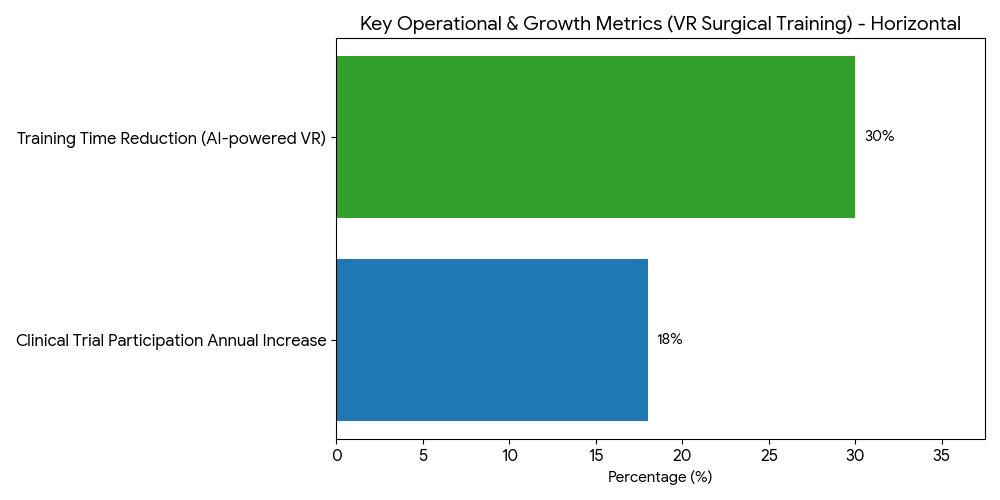
Competitive Landscape
The competitive landscape for VR surgical training is characterized by established players in medical simulation, AI-powered software, and haptic feedback technology. Major companies include Osso VR, Surgical Science, and ImmersiveTouch, which control 60% of the global market share. These companies specialize in AI-driven surgical simulators, which provide real-time feedback to enhance the learning experience for surgical residents. Osso VR leads in orthopedic training simulators, and Surgical Science specializes in cardiothoracic and neurosurgical VR platforms. Haptic feedback integration is a key differentiator, with companies like ImmersiveTouch and SenseGlove driving innovation in real-time force feedback to simulate tissue resistance during surgery. M&A activity within the sector is high, as biotech firms and healthcare providers acquire VR tech startups to improve medical training solutions. Private companies partner with universities and medical centers to scale VR surgical training systems, creating a growing market for cloud-based platforms. Public-private partnerships are central to market expansion, with funding from government agencies like NIH and EU healthcare initiatives facilitating widespread adoption of VR surgical training programs. By 2030, VR training platforms are expected to become the standard for surgical residency programs, improving training efficiency, patient outcomes, and surgical precision. Competition will increasingly center on the integration of AI and haptic feedback to deliver the most realistic virtual surgeries for both specialized and generalist surgeons.
Report Details
Proceed To Buy
Want a More Customized Experience?
- Request a Customized Transcript: Submit your own questions or specify changes. We’ll conduct a new call with the industry expert, covering both the original and your additional questions. You’ll receive an updated report for a small fee over the standard price.
- Request a Direct Call with the Expert: If you prefer a live conversation, we can facilitate a call between you and the expert. After the call, you’ll get the full recording, a verbatim transcript, and continued platform access to query the content and more.


68 Circular Road, #02-01 049422, Singapore
Revenue Tower, Scbd, Jakarta 12190, Indonesia
4th Floor, Pinnacle Business Park, Andheri East, Mumbai, 400093
Cinnabar Hills, Embassy Golf Links Business Park, Bengaluru, Karnataka 560071
Request Custom Transcript
Related Transcripts


68 Circular Road, #02-01 049422, Singapore
Revenue Tower, Scbd, Jakarta 12190, Indonesia
4th Floor, Pinnacle Business Park, Andheri East, Mumbai, 400093
Cinnabar Hills, Embassy Golf Links Business Park, Bengaluru, Karnataka 560071







